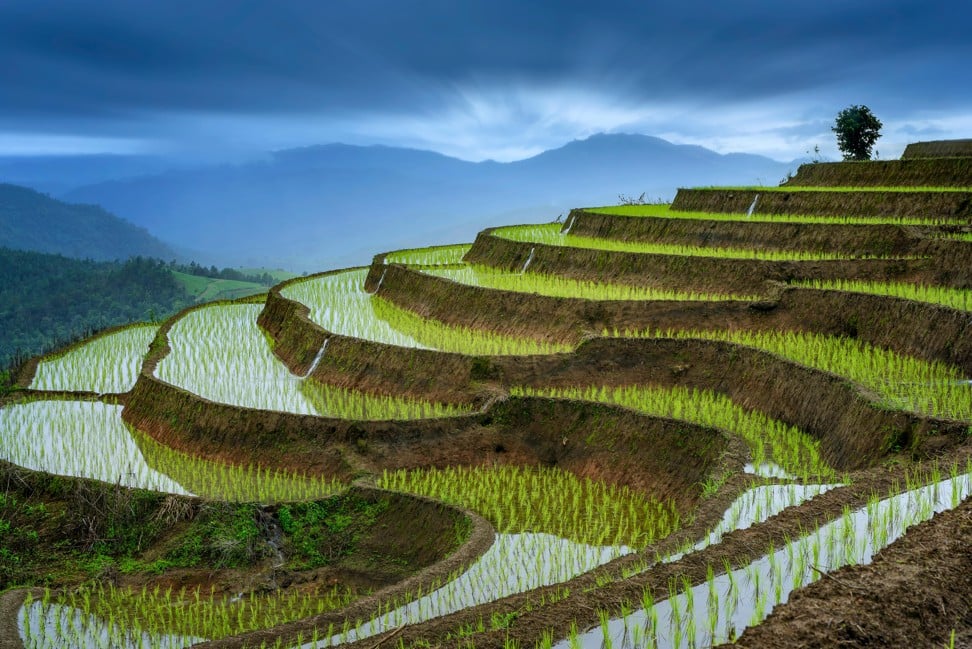
Hiking Doi Inthanon National Park in Chiang Mai, Thailand, home of country’s highest peak and a waterfall wonderland
- Doi Inthanon is not only Thailand’s highest mountain but is also home to ethnic minority villages, hidden waterfalls and royal burial grounds
- A two-day trek through the national park can include a night with a family from the local Karen tribe
Our guide from the local Karen village hops in front of my two American friends and I, pointing to a rickety bridge consisting of a few tree branches tied together that is our only way across the river. When I signed up for a two-day, one-night trek in Doi Inthanon National Park, this isn’t quite what I expected.
That said, it has been an adventure crossing rivers, chasing waterfalls and learning about the local Karen people, an ethnic minority originating from Myanmar.

In the afternoon, when the weather had cooled down a little, we head to the village of Mae Klang Luang along the Pha Dok Siew trail. As we set off into the jungle, to our right we see rows of shade houses, structures lined with fabric that protects vegetation from sunlight.
The Karen tribe, who migrated to northern Thailand in the 18th century, started growing opium poppies in the 1950s as a means to earn money, explains our guide. Later, King Rama IX founded the Royal Project Foundation in 1969 to help opium growers transition into more useful products. “It helped us move away from growing opium to rice, coffee and flowers,” says the guide.


The highlights of our two-hour trek to the village are two waterfalls. Usually, there is only one: the Pha Dok Siew Waterfall. But the river flows heavier after rainfall, and a smaller seasonal waterfall has formed nearby, creating a large pool along the 25m-long stepped rock outcrop. We dip our feet in, enjoying the cool water; we want to swim in it, but want to reach the village before darkness falls.
We emerge from the forest just as the sun starts to set. The land around the village is cleared for farming, and we meander down a terraced slope towards the pink sky and stilt houses.
Mae Klang Luang is home to about 80 families spread across two small hills. Most of the stilt houses use the lower level for wood storage or livestock rearing, but our host family, who were kind but did not speak English, have turned theirs into a living room with guest rooms in the back. The bathroom is across a dirt path in a free-standing hut. The kitchen is also in a separate hut of its own, raised higher than the house to keep pests away.


My two companions and I share the big room at the back and each have our own floor mattress complete with a mosquito net, pillow and blanket. The floor is covered with bamboo mats to keep the cold of the concrete away.
I have a surprisingly good sleep until the village-wide morning announcements through loudspeakers wake us up. Breakfast consists of eggs, bread and fried morning glory (water spinach) and is already waiting for us, a dozen chickens running around.
Our first stop of the day is the local coffee shop. A lady in traditional Karen garb of indigo blue tunic embroidered with colourful patterns runs the cafe and roasts beans over a fire in front of us. The coffee is a bitter and rich dark brew that provides a welcome caffeine boost. On our way out of the village, we spot a woman weaving colourful textiles. Her children eye us curiously, but shy away when we wave back.


There are two options to end the trek: a three- or five-hour hike. As one of my friends suffers from asthma, we opt for the shorter route that takes us to a rickety bridge to cross a river. We all jump in the water for a dip, since none of us showered in the simple bathroom yesterday. Our guide has packed us noodles wrapped in banana leaves for lunch.
After a last stop at the 80m-high Wachirathan Waterfall, where we can feel the cool spray on our faces, we make our way back to the car park, where we are startled by the crowds after such a quiet hike.

How to get there
The drive from Chiang Mai to Doi Inthanon is about two hours. All of the trekking tours include transfer to and from Chiang Mai, which has an international airport of its own.
The writer travelled with local sustainable tour operator Next Step Thailand Ecotourism, which also offers adventure and cultural tours consisting of one or more days (nextstepthailand.com).

When to go
The trail is open throughout the year, but it’s best to avoid the heaviest part of the rainy season between June and October.

